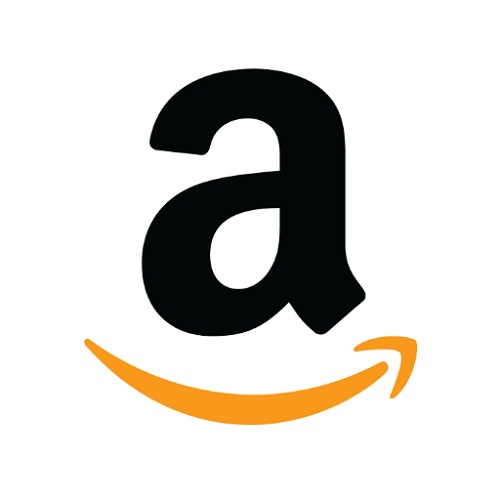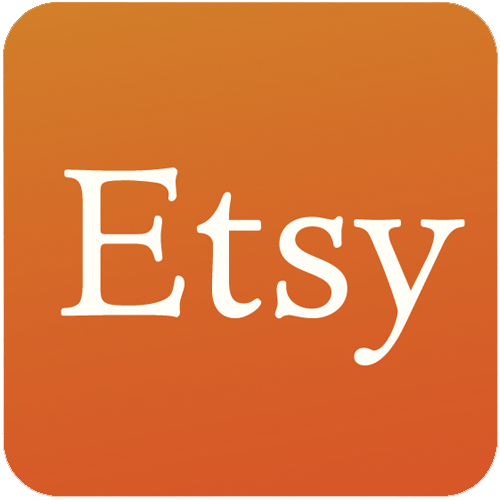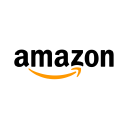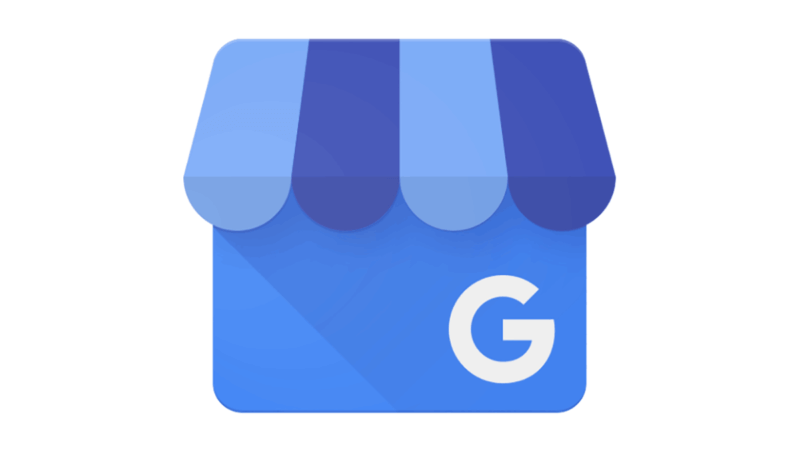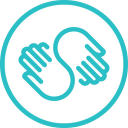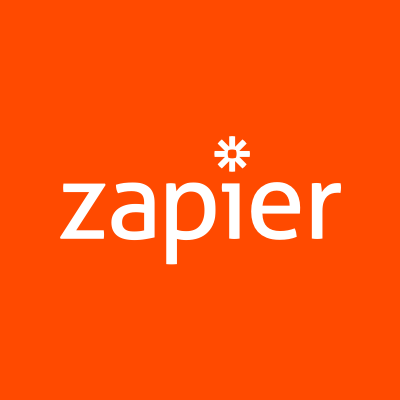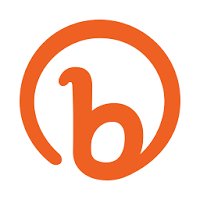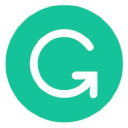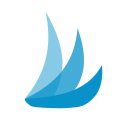Lessons Learned From 20 Years In E-Commerce
Hello! Who are you and what business did you start?
My name is Rosalee Andrea Rester and I launched a baby apparel t-shirt company 16 years ago called Babywit.com. When I launched it was immediately successful (enough to fully support my husband while writing a novel and two children) but the landscape changed tremendously over the years and I wanted to share with you some of the lessons I learned along the way.

How It All Started
After having a baby, I realized that I did not want to be a full-time student working for a doctorate nor working full time at a dot com. I wanted to stay at home with my baby girl. My sister-in-law with 3 children had launched a successful soap-making business that I took inspiration from and was looking for something I could build a stay at home business out of.
During my final year for a master’s in psychology, I presented my findings at the WPA in Vancouver BC and during that trip, my ex-husband pulled me into a decal t-shirt shop called Bang On. For a good laugh, I put some rather adult designs on baby shirts to bring back to my friends with babies. Sonic Youth, Bowie & the Sex Pistols all landed on baby onesies.
The trip to Canada and my desire to launch a stay at home business collided and the idea was implanted. At the time I was hanging out in the SF art scene and wanted to put local art on baby tees. I also thought that parents my age wanted something different and would be very much into seeing their babies wearing their favorite bands and cool zine art. I settled on the baby t-shirt idea. It seemed so easy. All I needed was a heat press, the transfers, and a website. I also knew there was a dearth of cool baby clothing, even in SF and at the time the idea seemed edgy way and uber cool.
My husband and I were quite low on money and moved into his parent’s home. I spent a summer working on building out a website in their basement. I phoned that company in Canada and asked if I could purchase their transfers and resell them on baby shirts. They laughed at me but said sure, why not. I also asked zine artists to allow me to put their art on my baby shirts. Artists like Dave Warnke, Bill Griffith, Kieron Dwyer, Trina Robbins & Steven Weissman. Everyone I told the idea to thought it was a bit nutty. Bands & zine art on baby shirts? So crazy in 2003.
Launching the business.
There was no official launch. I’d purchased on my credit card a used HIX heat press for $300. I also purchased an Epson Ink Jet Printer, transfer paper, band transfers from that Canadian company and t-shirts from American Apparel. I think my entire investment was under a grand. A relative had given me a PR list that I contacted but that was about it for the launch.
I remember getting my first online order for a Ladies Man shirt and felt bad about sending it out because I had made the transfer at home from an Avery transfer sheet. A local store told me about Ace Transfers, a company in Ohio that produced screen-printed transfers.
Within a matter of months, I was making a living wage off my sales. It continued to grow to the point where I was supporting my ex-husband and our child. He was off writing his fiction novel, I was making baby clothing and we were both at home with our girl.
Within 12 months we had moved to Portland, hired employees and bought a house. But it was not to last. I made the move to go wholesale and began showing at tradeshows. After the first show, I began receiving cease and desist notices for selling The Ramones, The Clash, The Smiths, etc. I quickly realized the company in Canada did not have a license to sell me those transfers to sell on baby clothing. I had to rethink my entire business. When this happened, sales had reached around $350k annually.
I was worried about what would happen if I pulled all the band shirts. Fortunately, I was large enough that I was able to secure legit contracts with Billy Bragg, Antony & The Johnsons, Sonic Youth and Jimi Hendrix. And, by that point, other companies had picked up on the baby band shirt craze and were selling them wholesale to websites like mine. The only real shift I made was to move away from manufacturing and into an online boutique model with a focus on locally made goods.
I also launched other channels including Amazon and Etsy. At that time, it was not crowded, and the Amazon channel flourished. The Amazon channel increased in sales as my website fell.
By 2008 sales from just my website were at 465K. The profit margin was very good as that was all direct sales. Visits to my website were between 35-40,000 a month with a conversion rate of 1.24%. This entire year (2019) my website has only generated 8k and has had only 11k visitors over the entire year.
After the launch I focused mostly on branding, newsletters, interacting with customers & building a wholesale business. I refocused on a new line modeled on the cradle to cradle product development using organic fabrics and water base hand screen printing. I also developed a new baby all in one outfit (Yankers®) that had no elastic or fasteners.
Around 2011 we had outgrown the Miva platform and hired an ‘expert’ company to move us to a new platform. This company moved us to a Magento but failed to consider our site structure nor did they set up a way to redirect the massive amount of inbound links we had received over the past 8 years. Our page rank was quite high and when this juice was cut off our traffic began to take a nosedive. The number of hours we spent attempting to put in manual redirects was over the top but it continued to tank and we were never able to claw our way back up. I had to let all my employees go except for one.
Below is a comparison of our analytics of the before and after the website platform change. It’s pretty shocking. In one year, I lost 40% of all my traffic. Previous to the website platform change we had always had a positive growth trend.

In late 2010, my husband and I also began to split and while going through my divorce I ignored my business and decided that I was going to play music, travel, make art and write fiction.
In 2012 website sales were so dismal that I had to let my last employee go. It was such a sad day. We’d worked together for over 5 years. It was the end of an era.
It was just me left and although my website had choked the Amazon channel I had invested in years before proved to be profitable. Between 2011 and 2012 my sales on Amazon nearly doubled. Many of my shirts were best sellers and sales increased until 2014. Each following year was progressively worse until the Christmas of 2016 when my sales actually dropped over the holidays.
This is when I began to have an inkling that something was just not right. I started poking around and realized there were other sellers selling my branded products with my designs on them. I also saw negative reviews under my products. I’d never seen any of these negative reviews because I wasn’t the seller.
My trademark and brand and best selling shirts were being knocked off and I was being undercut by at least 4 to 10 sellers on each listing. Here is my blog post on what happened if anyone is interested in what I had to do to stop the pirating. I think now Amazon offers a program called Transparency that you can pay for to ensure pirates don’t steal your listings. Either that or you can sign up for their Handmade program where they also protect you from pirates.
My sales never returned on Amazon either.
Google Analytics comparing 2008 vs this year.

By this point in time, I was drained and completely tired of fighting so hard for a product I didn’t have a passion for. When my sales dipped, I had not only taken over the duties of my employees but also of my sewing contractor. I was sewing in all my own labels and got quite used to using a sewing machine.
It was in 2017 that I became determined to learn how to sew out Yankers® that baby romper without any elastic or snaps I had designed 10 years earlier. I fell in love with the entire process of making clothing. I learned how to use a Serger, Coverstitch & Single stitch machine. I learned how to make patterns. I sort of learned how to use Opti-tex. I purchased industrial sewing machines and created an entire line of women’s clothing with the focus being style & comfort. I did a fashion show called Fringe. I worked under a local designer doing alterations to learn sewing techniques.
But then the inevitable happened. I ran out of $. My kids are now 12 & 16. A job sounded appealing to me. No more hustling. No more 80 to 90-hour workweeks. Just a 9-5 work week with benefits. I started with a part-time job at a non-profit but after 7 months in a truly toxic work atmosphere (during that time 2 people were fired and 4 left (5 if you include me!) out of a staff of 10), I left thinking Baby Wit looked pretty damn good.
So, this past month has been dedicated to rebuilding Baby Wit into what I really want it to be and I can see signposts around me pointing me in this direction. I received a grant from Portland for 1k to focus on marketing. I’ve been interacting with customers again and after working on my website for only a month here is a monthly comparison of July 2019 and Oct 2019. Of course, I don’t think the website has anywhere to go but up at this point. LOL.

Not sure that I have anything to feel hopeful about yet but at least it’s a movement in a positive direction!
How are you doing today and what does the future look like?
Today I am working on merging Baby Wit and You Can Stay Clothing moving the focus away from graphic tees and towards designing mom and baby outfits that I can print graphics on. I am working towards my dream.
Short term goals are restructuring my website and marketing messages without losing what little sales I have.
Finding ways to produce custom made goods locally without extravagant costs. If I can run a showroom and not have to depend on wholesale this will help a great deal.
Someday I want to have a shop run out of an old house that is also a showroom. I’d like to have a showroom in the front area of the house and employ one sales/marketing person, 2 seamstresses, and one print/production manager.
I would like to be able to print and dye fabric out back in the warehouse. People could come to the showroom and try on various garments that we could customize for them via fabric prints and fit. Even further out, if this model is successful, replicate it.
Through starting the business, have you learned anything particularly helpful or advantageous?
The most important lesson I have learned is that a business needs to be loved and nurtured rather than used merely as an income stream.
I always treated Baby Wit a bit like an unwanted child as it was never my long-term plan to make graphic baby t-shirts for a living. Baby Wit gave me the opportunity to stay at home with my children, the freedom to create and experiment with new ideas & techniques, the ability to create my own work environment, the freedom to fail and the time to learn new skills and I took it all for granted.
If I had it to do again, I would have acknowledged my lack of interest in making graphic baby tees and figured out a way to transition Baby Wit into a project I felt truly dedicated to rather than continuing to expend energy and resources on a project I felt ambivalent towards.
I learned that one must keep abreast of what is happening in your market space and how it is changing. I am embarrassed to say that because I cared so little about the children’s clothing market, I did little to stay current. I knew that putting a band onesie on your baby had become passé but I didn’t bother to find out where the market had moved.
I learned the importance of listening to one’s gut. When working with the company I used to move platforms I began to encounter communication issues with what was discussed and what was being produced. But, I was stuck in the sunk cost trap as I had already invested half my budget with this company. I learned that when communication issues begin to arise during large scale projects it’s imperative to halt and regroup instead of pushing through and hoping for the best.
I learned a valuable lesson in making investments in products that people just aren’t that interested in. I invested too much money in printing an art project that an employee had pulled together. I sewed out a pattern in 8 sizes without fitting it first (this was before I learned how to sew.) During my art-making period, I took some of my free motion embroidery and the locally printed way too many journals. The list goes on and on. It is important to test ideas before investing large sums in production because, even if you think it’s the coolest product ever and all your friends are telling you it’s a great idea, there might not be folks who will actually spend $ on it.
I learned that if you have a large newsletter list, you need to continue to email on a regular basis or they will forget who you are and mark you as spam when you decide to start sending newsletters again. Then, your email address may become flagged as spam email and all your emails will end up in a spam folder. So keep it regular or get your list cleaned.
I learned that you cannot manage projects in your head. With the tools we have today there is no reason not to have your projects broken down into steps across a timeline.
I learned that you should try and find out what services your city offers to small business owners. The help I have received from our city includes legal help, business counseling, free tickets to business events, free classes and even a small grant to help with marketing but I did not tap into some of these until recently missing out some much-needed support.
I learned how valuable it can be to connect with other small business owners who are doing similar things whether it be in person or online because no one should work in a vacuum.
What platform/tools do you use for your business?
- Redbooth is hands down my favorite tool for project management. It has everything in there (easily add tasks from a toolbar, workspaces, timelines, time tracking, task assignments, Gantt charts, ability to move tasks between lists) and is affordable on a budget. It is a Godsend.
- Wave I can’t say enough wonderful things about this accounting software. Plus, it’s FREE!
- Big Commerce is my eCommerce platform. There are advantages and disadvantages to every platform. This platform just seemed to come with everything I needed without shelling out an extra $ monthly for apps as Shopify did. I had just left Magento as it was too much work for me alone.
- Shipstation is my shipping manager and I give this program 5 stars. It allows you to import all your stores across various platforms and doesn’t charge you by the store which is awesome. They also have a return page so customers can print their own return labels.
- Afterpay I just added this to help customers spread their payments over time at no cost to them.
- Mailchimp It’s free and I use it for my newsletters although I am looking to switch to something that has a lighter load on the front end as it is slowing down my website.
- Goaffpro I am just trying this out for an affiliate program I’d like to grow but I am not sure if I have the time and may just take a dive into Share a Sale instead.
- Google Analytics and google search console to monitor and tweak my website.
- Tailwind Love this tool for posting to Insta and Pinterest.
- Zapier or IFTTT Love these tools for automating tasks
- Buffer Love this For posting to FB/Twitter because I can automate it with Feedly, Pocket & Zapier for free.
- Feedly to integrate all my RSS feeds and be able to look at them on a nice interface
- Pocket to save and organize all the RSS articles I post.
- Upwork I use to get developers and Fivrr for artists
- Clockify is a fabulous timesheet app. It’s free and so easy to use.
What have been the most influential books, podcasts, or other resources?
Hands down I go to youtube for so many things. I have also used Bluprint for sewing tutorials, Udemy for coding.
Advice for other entrepreneurs who want to get started or are just starting out?
After my experience, either be passionate about what you do or be grateful for what your business gives to you but to do neither makes for one unhappy camper.
Also, recognize what you really enjoy doing. If you love making but hate hustling your goods, you’d better think about your sales model. I started a women's clothing line but halfway through realized I did not have the hustle in me to take it to the next level.
Are you looking to hire for certain positions right now?
Not yet but hopefully soon I will be looking for sales, marketing, production, & sewing. Either that or I will be out looking for work myself. Time will tell.
Where can we go to learn more?
- Website
- You Can Stay Clothing
- Facebook - You Can Stay Clothing
- Instagram - You Can Stay Clothing
If you have any questions or comments, drop a comment below!

Download the report and join our email newsletter packed with business ideas and money-making opportunities, backed by real-life case studies.

Download the report and join our email newsletter packed with business ideas and money-making opportunities, backed by real-life case studies.

Download the report and join our email newsletter packed with business ideas and money-making opportunities, backed by real-life case studies.

Download the report and join our email newsletter packed with business ideas and money-making opportunities, backed by real-life case studies.

Download the report and join our email newsletter packed with business ideas and money-making opportunities, backed by real-life case studies.

Download the report and join our email newsletter packed with business ideas and money-making opportunities, backed by real-life case studies.

Download the report and join our email newsletter packed with business ideas and money-making opportunities, backed by real-life case studies.

Download the report and join our email newsletter packed with business ideas and money-making opportunities, backed by real-life case studies.

